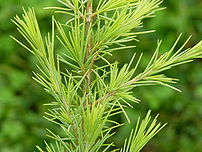[amazon_link asins=’B00UXRD3WC,B0088V4OMI,B00O2QBZNY,B00J1BVV6G,B00J1BVV6G,B00S3OYAWY,B007ENGKEQ,B01HIP2BVK,B06XRHMVHM,B00O2Q6VNI’ template=’ProductCarousel’ store=’finmeacur-20′ marketplace=’US’ link_id=’6c96bcd0-3f79-11e7-bbb5-8f869a1f8f8a’]
Botanical Name: Brassica oleracea alboglabra
Family : Brassicaceae or Cruciferae
Species: Brassica oleracea
Cultivar group: Alboglabra Group
Common Name : Chinese Kale , Chinese broccol, Kai-lan, Gai-lan
Habitat : Not known in the wild, it probably originated in the Mediterranean and is very close to B. oleracea costata, the Couve tronchuda.
Description:
Brassica oleracea alboglabra is a perennial plant growing to 0.5 m (1ft 8in) at a fast rate.
It is not frost tender. It is in flower from May to August, and the seeds ripen from Jul to September. The flowers are hermaphrodite (have both male and female organs) and are pollinated by Bees.The plant is self-fertile.
CLICK & SEE THE PICTURES :
Chinese kale is recognized as an interesting and a delicious vegetable in China. This vegetable is similar to western broccoli in appearance, so it is also known as Chinese broccoli. Two varieties of Chinese kale can be found in the present world. However, both these varieties are heat resistant and they will grow through winter in most areas. Therefore people can grow them with less hassle at any part of the world.
Cultivation:
An easily grown plant, it succeeds in full sun in a well-drained but moisture-retentive fertile preferably alkaline soil. Prefers a heavy soil. Plants prefer a pH in the range 5.5 – 6.5. Succeeds in any reasonable soil. Plants tolerate several degrees of frost once they are past the seedling stage. They also tolerate higher summer temperatures than most members of this genus. Closely related to broccoli (B. oleracea italica), this species is often cultivated in the Orient for its edible leaves and flowering stems. There are several named forms. A perennial plant, it is usually cultivated as an annual . It is fairly slow-growing, but it provides a crop over a long period in the summer and autumn. In a suitable climate they can crop for a period of six months. Most cultivars have been developed in the warmer parts of China and are best suited to warmer conditions than usually occur in Britain, though some forms have been developed that are more suitable for cooler conditions. Plants can be transplanted, if moved under cover in the autumn they will continue to grow slowly and provide a crop all winter.
Propagation:
Seed – sow in succession from late spring to late summer or even early autumn in favoured areas. The heaviest yields are from the mid to late summer sowings. Early sowings may bolt if there is a period of cold weather. Cuttings of lateral shoots root easily and can be used to produce more plants
Edible Uses: ….Young flowering shoots and small leaves- raw or cooked. Delicious if used when fairly young though they can become tough with age. Older stems should be peeled. All parts of the growing plant are used, including the developing inflorescence. Plants take about 3 months from sowing to their first harvest. Either the whole plant can be harvested, or, if a further harvest is required, just the terminal shoot is harvested which encourages the development of lateral shoots. Yields of 2 kg per square metre can be obtained
Medicinal Uses:
Chinese Kale has high iron content with low calories & high fiber content . It is filled with high nutrients, vitamins & magnesium .It is a great food which helps digestion. It is filled with antixodients like carotenoids and flavonoids which helps to protect against various types of cancers.Kale is a great cardiovascular support, eating this vegetable regularly reduces cholesterol.
Disclaimer : The information presented herein is intended for educational purposes only. Individual results may vary, and before using any supplement, it is always advisable to consult with your own health care provider.
Resources:
https://en.wikipedia.org/wiki/Kai-lan
http://www.pfaf.org/user/Plant.aspx?LatinName=Brassica+oleracea+alboglabra
http://www.examiner.com/list/10-health-benefits-of-kale











![Reblog this post [with Zemanta]](https://i0.wp.com/img.zemanta.com/reblog_e.png?w=580)









